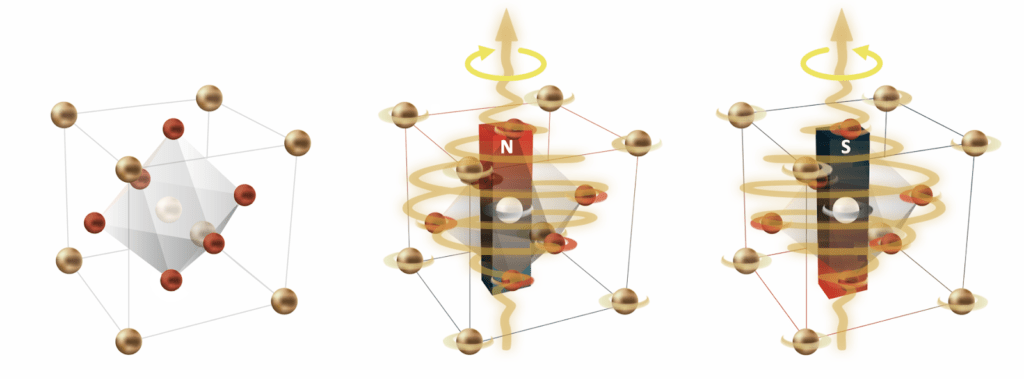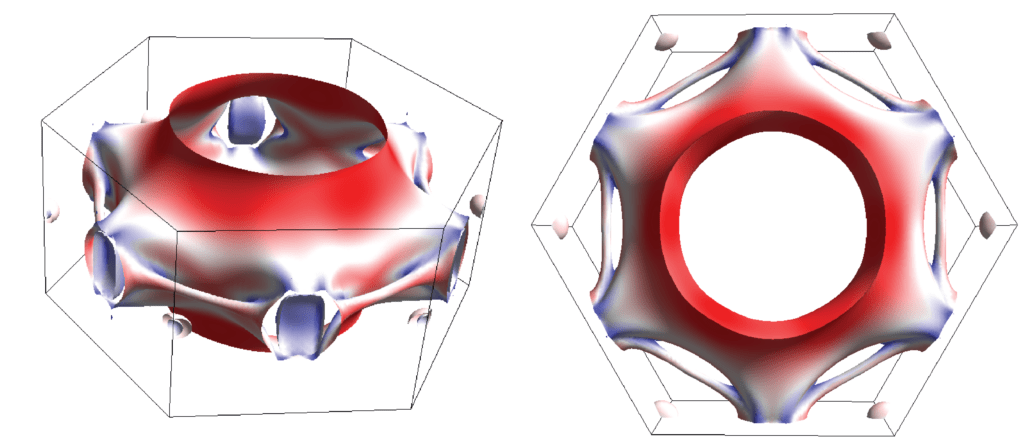We have succeeded, through the use of a special laser, to make magnetic a material that is normally not such. In addition to its value for fundamental research, the most surprising finding of the study is that the magnetic effect is ten thousand times larger than theory expected. This allows the effect to potentially be used in technology as well, and some research groups are already working in this direction. Our discovery has just been published in the journal Nature. The study was originally planned to prove a theoretical prediction made a few years ago, in which it was said that if you were able to move atoms in a material in a circular trajectory, the material could become a magnet, albeit a very weak one. The original theoretical paper had been very optimistic about the size of the effect. It was at the limit of what could be observed in the lab. We decided to give it a try though, because the idea was sufficiently fascinating from a physics point of view. It allowed us to combine different symmetries of nature, which could be tested for the first time thanks to a new type of laser developed in my research group. Figure: The laser light is circularly polarized, that is, it is shaped like a “corkscrew.” When laser light with this type of polarization enters a material, it transfers its circular polarization to the atoms in it, causing them to rotate and generating atomic currents. If the frequency of the light matches the frequency of vibration of the atoms, the effect is enhanced and relatively large magnetism is generated. Adapted from Nature. Image Credit: Dunia Maccagni & Stefano Bonetti. The new type of laser works in the far infrared, with a wavelength of about 100 micrometers, or 0.1 millimeters. For comparison, visible light has a wavelength of just under 1 micrometer. In addition, the light emitted by the laser used in the study has a peculiarity: it has a polarization (the direction of oscillation of the radiation, the direction that is filtered out by, for example, polarized glasses) that is circular. That is, the light propagates in the shape of a corkscrew, as shown in the figure. This allows a circular motion to be imparted to the atoms in the material, as suggested by the theoretical prediction. There was a moment of disbelief in the lab when we realized that the effect was gigantic: the material, which appears to the eye as an ordinary glass sample, became strongly magnetic, almost as strong as real magnets! We spent two years trying to find any artifacts, because it was an experiment that had never been tried before and we had no other research groups to compare with. In fact, in addition to the magnetic effect, the measurement also showed another nonmagnetic effect that became the subject of a second publication. Having separated the magnetic effect from the nonmagnetic effect, the manuscript was ready, but the work was not finished. The discussion with the anonymous reviewers lasted more than a year and a half, which made it possible to rule out the presence of possible additional artifacts. In the meantime, similar experiments were reproduced in several other laboratories around the world that confirmed the discovery. The other labs also demonstrated its generality for a much wider class of materials (including glass itself, silica), and in some cases with even stronger magnetic effects. Why is the discovery so important? Light and matter describe almost all of the physical world we experience. Understanding their fundamental laws allows us to imagine and design new materials and technologies that can enable sustainable human existence with a finite resource planet. This study taps into a very recent branch of the physics of matter where light is used not only to study the properties of materials, but also to change their properties. As in this case, where we induced magnetic properties, otherwise absent, using light. The idea of creating new sustainable materials is the mission of the RARA Foundation – Sustainable Materials and Technologies. The two most pressing issues for our future as humanity are energy and a more sustainable technology. Both depend crucially on a common factor: materials. Finding alternative, clean, abundant materials is the only way to ensure a sustainable life for the whole planet, not just a small part of it. With the initiatives related to RARA, we want to create attention to these issues and attract the most creative minds, not only those of people who are already experts in the field, but also of our and prospective students, to try together to solve this enormous challenge.










